The frigid nighttime temperatures are getting exhausting- it's not usually this cold (in the teens and 20s) for this extended a period. Dripping faucets, heaters on pipes, down comforters on beds. The opossums stay nice and warm in their Clawsable heated cat houses and I have straw-filled beds set up for any wildlife needing respite.
,
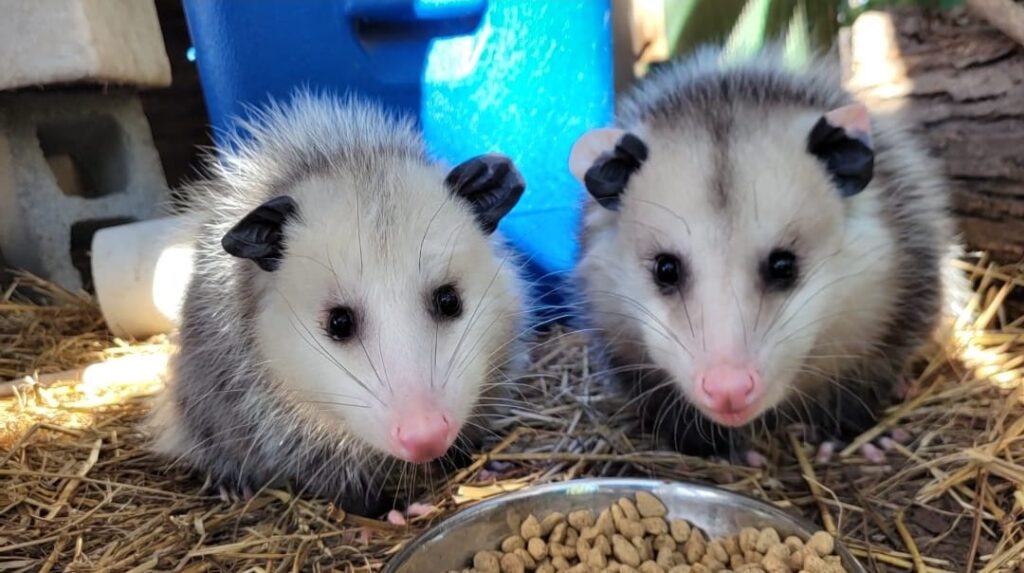
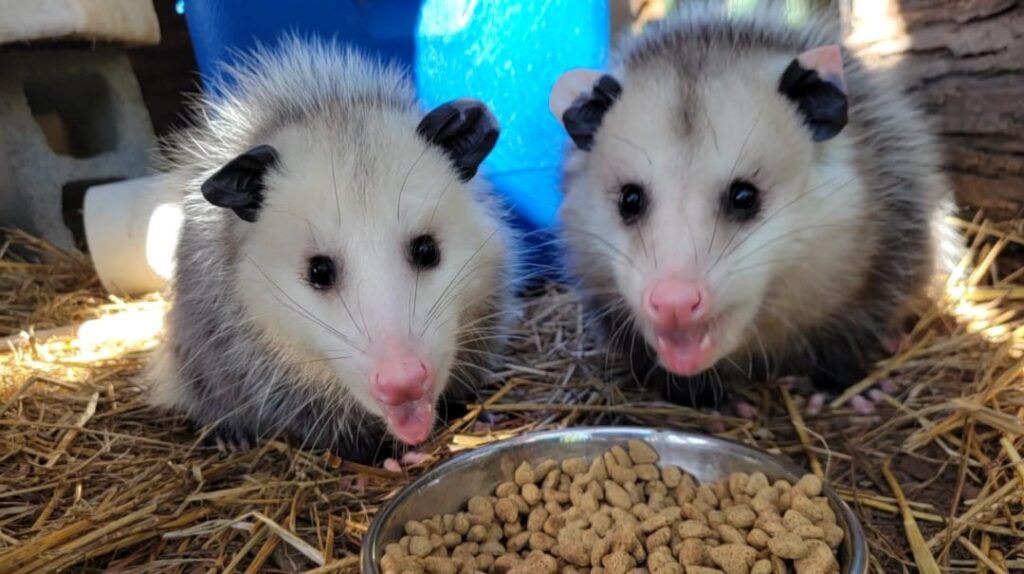
Winter and Bats
Some bat species migrate during winter. Big brown bats, like the 3 I have, hibernate. During winter when food isn’t available, bats go into a state called “torpor”. Their body temperature decreases to the temperature of their environment. Their metabolism decreases, along with their heart rate and respiration. They build up fat reserves in the fall and use these while hibernating, although their caloric needs are drastically reduced.
Big brown bats hibernate in tightly packed groups in caves and man-made structures like culverts and bridges. Some are found in the attics of old houses. Each of my bats were found in a house, and brought to me for care.
Overwintering bats
Bats can be hibernated in spare rooms, garages, basements, crawl spaces, or refrigerators. Bats have been successfully hibernated in refrigerators for over half a century! Wine refrigerators, which maintain a higher level of humidity, can be used, or just a special set up inside a standard refrigerator.
Criteria for overwintering bats
Only healthy bats should be artificially hibernated. Big browns require temperatures in the 38 to 44 degree range and a high (above 85%) humidity. Before I placed these 3 into the hibernacula, I made sure their weight was in their upper range- 19 to 25 grams. They ate very well for weeks before it was time to get them settled in.
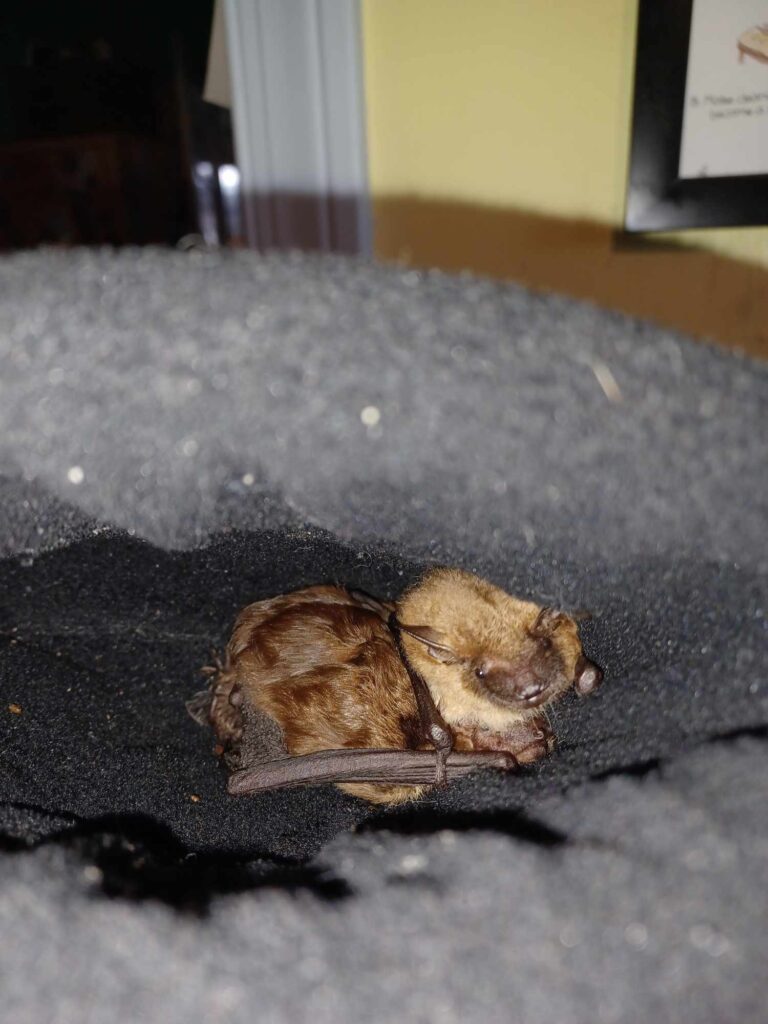
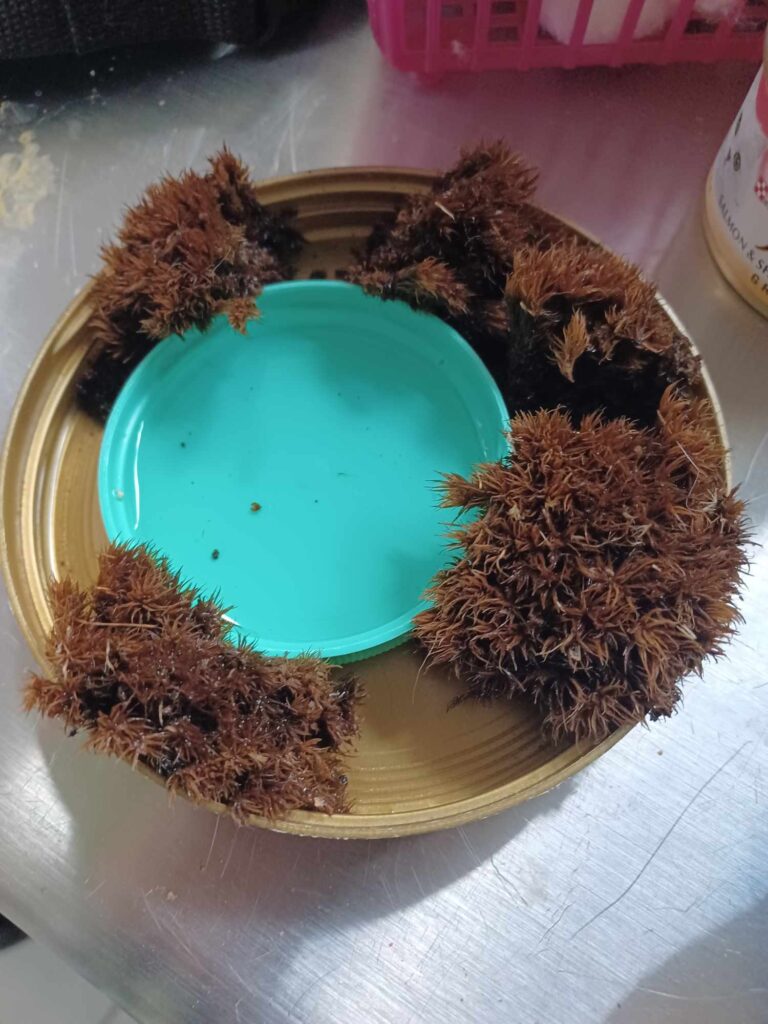
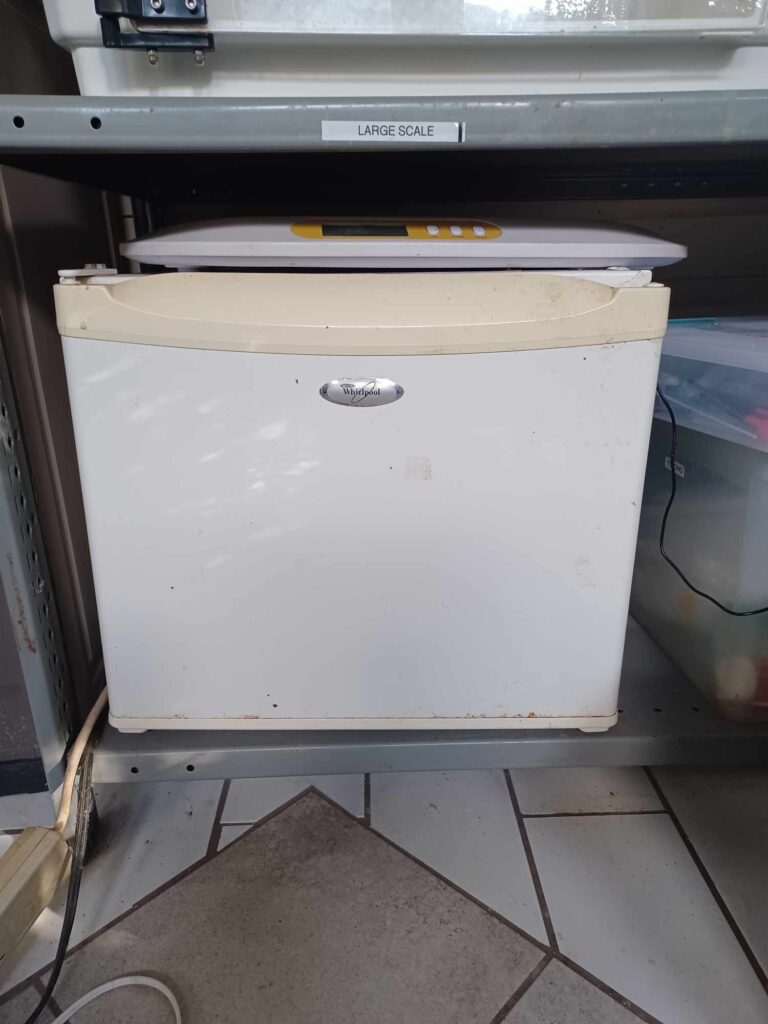
Hibernacula set up
The hibernacula is the space they inhabit when hibernating. You can’t just stick a bat inside a fridge! I am using a small “Bat Hut” which can be zipped closed. There are multiple ways to set up a hibernacula. As long as the temperature and humidity is maintained, they have access to drinking water, and a place to snuggle together, it is adequate.
I have a small soft pouch in the hut that they roost inside. At the bottom of the hut is a dish of water-soaked moss, and a smaller dish of drinking water placed inside. A remote hygrometer/thermometer shows me a reading of the inside humidity and temperature without having to open the fridge or the hut.
While their oxygen needs have decreased, I still open the door once a day for air exchange. This doesn’t disturb them, which is important. If they are disturbed from hibernation, they can use up their fat reserves. One of the reasons White Nose Syndrome is devastating to bats is that it is so itchy it wakes them up. They burn precious calories getting their body temperature up and scratching the spots where they fungus has infected them.
Checking on the bats
Every 10 days to 2 weeks I remove the bat hut from the fridge and let the bats come to room temperature. I weigh them, check their eyes, ears and wings and offer water. If they have lost too much weight, I will keep them out and offer food and water for a few days until they have regained their appropriate weight.
Feeding the bats
When I take the bats out for check ups, I also take their food, live mealworms, out of the same fridge. The mealworms are put in a bin and fed leafy greens and other nutritious vegetables. Enough mealworms for each bat’s meal are tossed with calcium and a multivitamin supplement. These bats have learned how to eat mealworms on their own, which is a whole other story!
Where I learned this information
I use two sources of information to inform me about hibernating bats. One is the 4 volume series, Bats in Captivity, edited by Sue Barnard. The other is The Rehabilitation and Captive Care of Insectivorous Bats by Amanda Loller. I’ve also learned a lot from experienced bat rehabilitators like Elizabeth Hartman.
Meanwhile in opossum land...
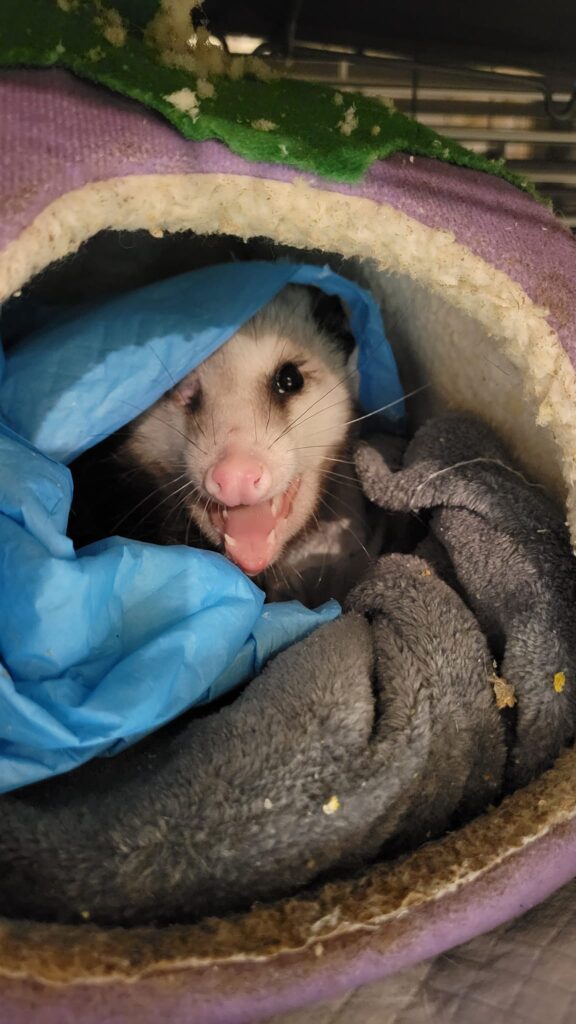
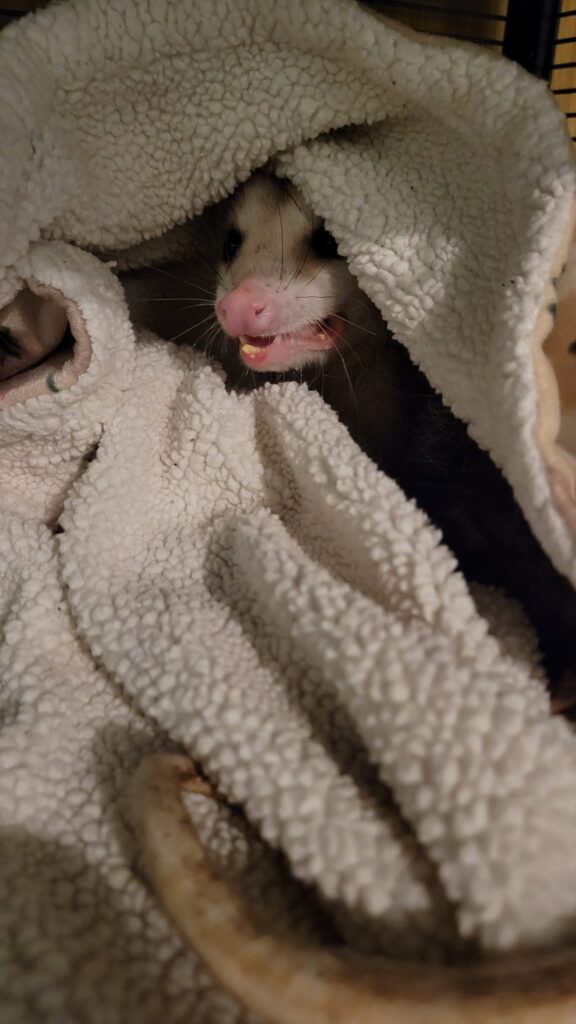
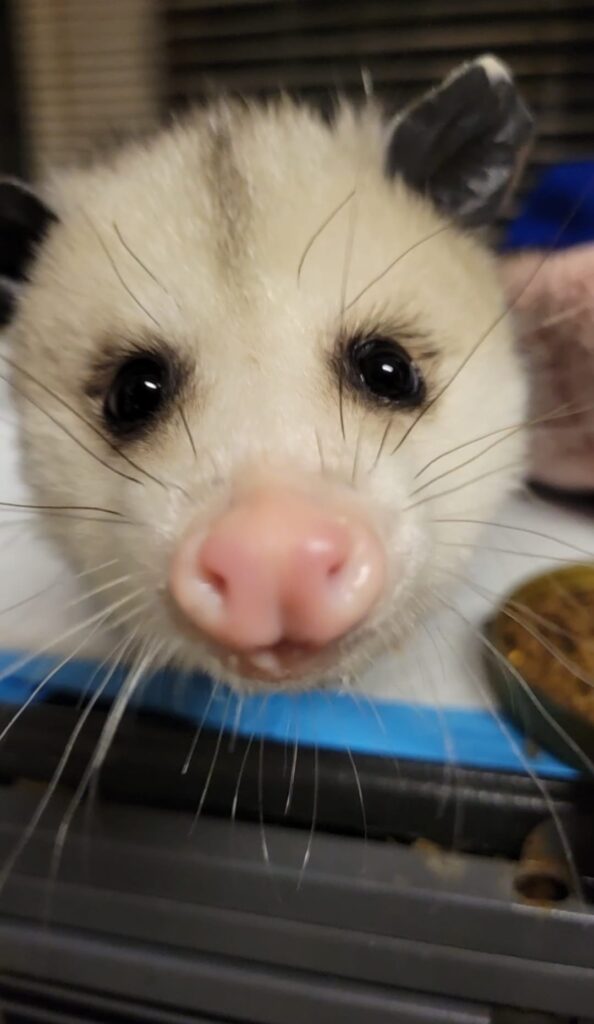
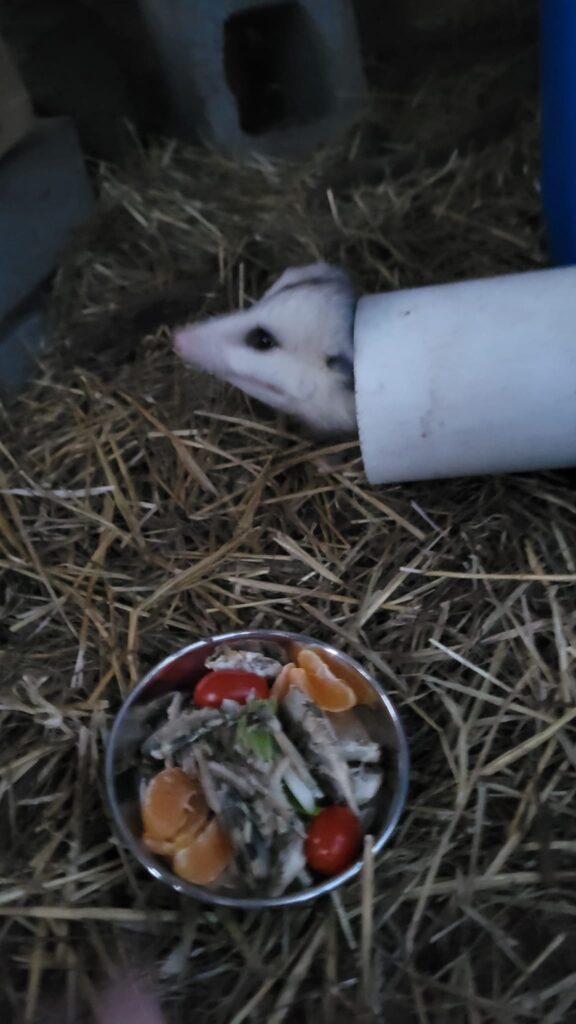
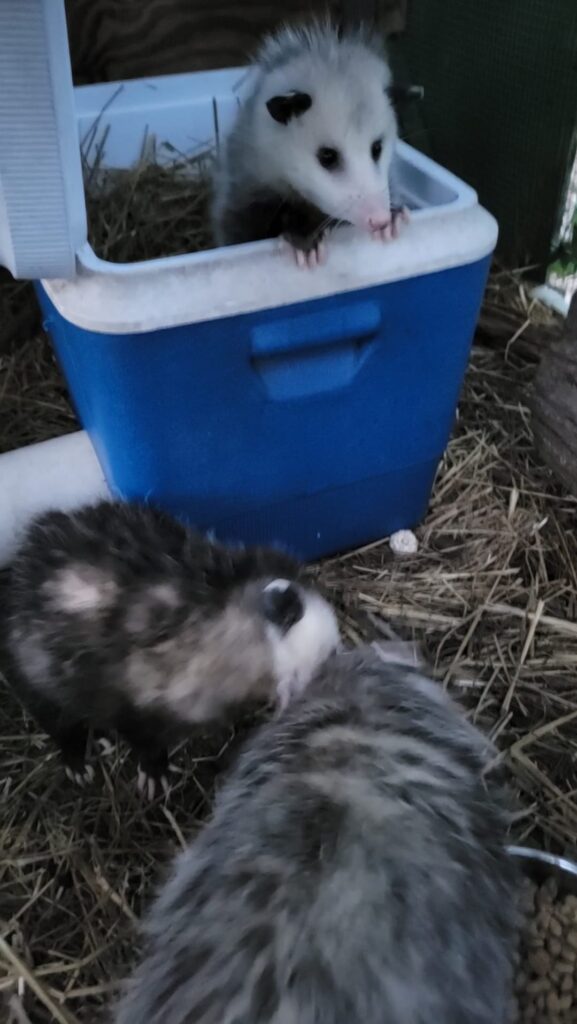
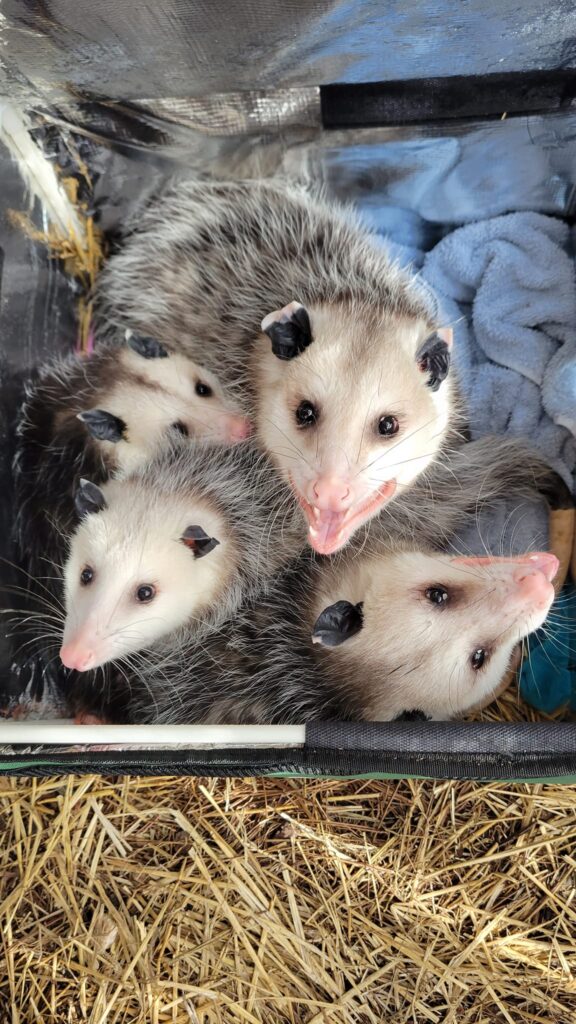
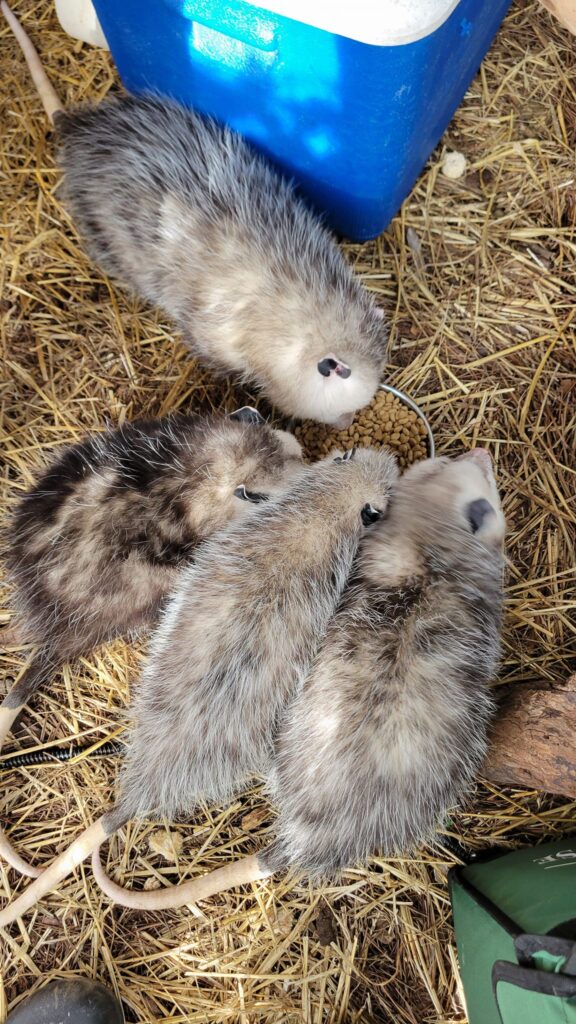
Outside
The four outside opossums, Blossom, Victoria, and Big and Little Brother, are doing their own version of hibernating. They have exercise wheels and lots of logs and climbing toys but are staying warm in their beds. Normally good eaters, they have been avoiding their vegetables! They eat all their fruit and meat treats and eat a lot of healthy kibble. Their water bottles are freezing solid so I put in a heated water bowl. They still stay clean and use a latrine but I think they run right back into bed! It has been getting down to 16 degrees at night here.
Inside
If it wasn’t so cold out, I would put Winky in an outside enclosure. Right now he’s bored. He wakes up to eat and use the potty, spends some time on an upper shelf in his cage staring into space (we call it “gargoyling”) and then climbs back in his nest. Unlike the outside opossums, he and Lt. Dan eat their vegetables. I think they are so bored they eat them for something to do. Lt. Dan hasn’t improved much since December. He can grasp with his feet, move his legs straight up, and move his tail, but he drags his legs when he moves around his cage. He doesn’t like his wheelchair, it scares him. He is aware that he is vulnerable and so it is hard to assure him that the wheelchair is for his independence.
Other animals
I also have a temporary young Black rat snake visitor. He was caught on a glue trap but the finders did a great job of removing the majority of glue. I placed him a warm water soak to rehydrate him, but he wasn’t very thirsty. The warmth of the bath made him VERY active and it was an exciting event getting him out of there and into a container. Kathryn Dudeck of Chattahoochee Nature Center advised me to put him back into brumation (the version of ‘hibernation’ that snakes go into) in a cool spot with a water dish to soak in and a hide. He will be released back where he was found this week as it will be warming up for several days.
I was brought another Big brown bat tonight that was found in someone’s house. I don’t think one bat alone can survive the low temperatures we have been experiencing so I am assuming, as are the people that brought him to me, that there are more. He drank a lot of water and is probably hungry, too.




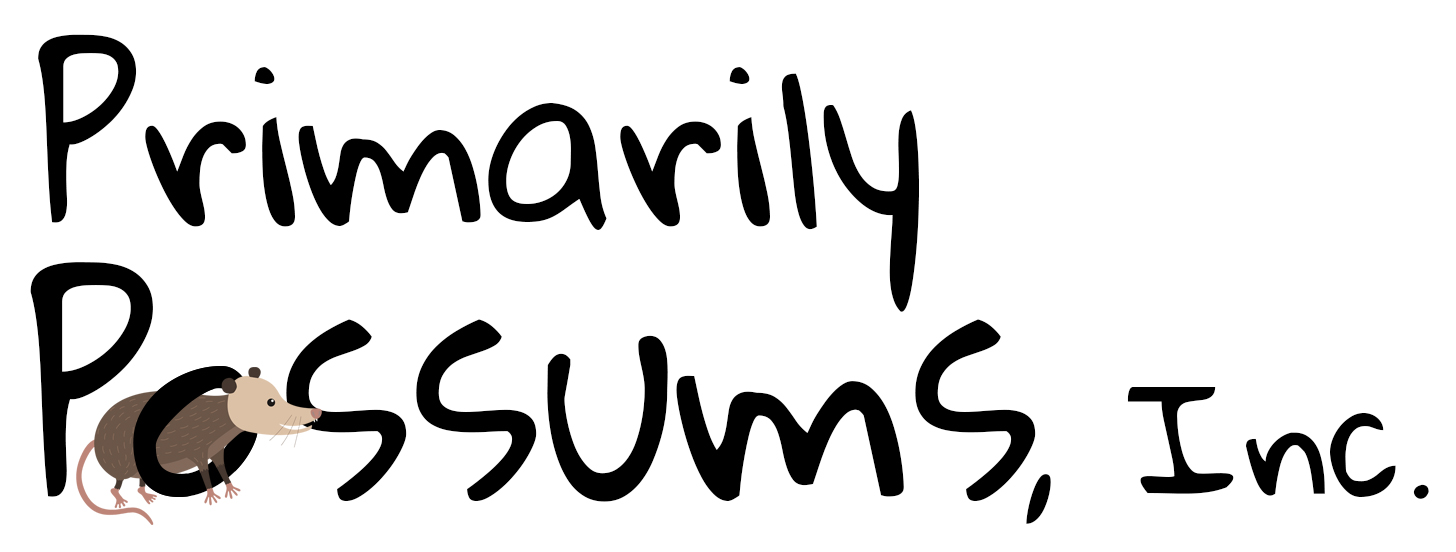

 2025 Sabbatical
2025 Sabbatical